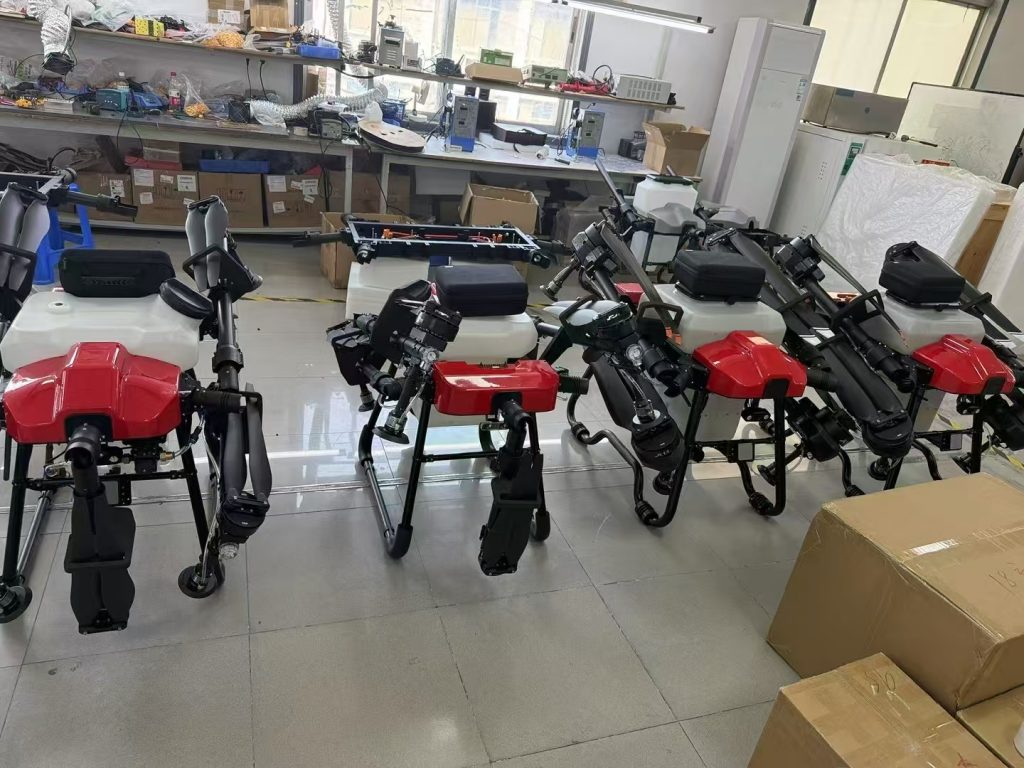
Orchards—whether apple, citrus, peach, or vineyard—are among agriculture’s most labor-intensive and sensitive systems. Unlike row crops, their irregular canopies, towering trees, and dense foliage create unique challenges for crop protection: pests hide in lower branches, tractors can’t navigate narrow rows, and manual spraying is backbreaking (and dangerous). For growers, balancing effective pest control with sustainability and profitability feels like walking a tightrope.
Enter orchard spraying drones: unmanned aerial vehicles (UAVs) engineered specifically to navigate orchard complexity, deliver targeted treatments, and protect both fruit quality and grower livelihoods. These flying machines aren’t just tools—they’re a revolution in how we care for the trees that supply 80% of the world’s fresh fruit.
Why Orchards Demand a Better Spraying Solution
Traditional orchard spraying methods are outdated, inefficient, and harmful:
1. Manual Spraying: Hard Labor, High Risk
Orchards require climbing ladders or using handheld sprayers to reach upper canopies and hidden pests (like codling moths in apple trees or aphids in citrus). This exposes workers to toxic chemicals, leads to uneven coverage, and takes weeks to complete a single application—too slow to stop outbreaks.
2. Tractors and Sprayers: Too Big for Tight Spaces
Orchards often have narrow rows (just 3–5 meters apart) and uneven terrain. Tractors get stuck, compact soil, and damage tree roots. Boom sprayers also miss lower branches or overdose upper canopies, wasting chemicals and increasing residue.
3. Manned Aircraft: Imprecise and Costly
Crop dusters can cover large areas quickly but lack the precision to avoid over-spraying. For high-value fruits like grapes or peaches, this means unnecessary chemical exposure—and higher costs for growers.
4. Environmental and Economic Pressures
Consumers demand pesticide-free fruit, while regulators tighten limits on chemical residues. Meanwhile, labor shortages and rising input costs squeeze grower profits. Orchards need a solution that’s targeted, fast, and sustainable—and drones deliver exactly that.
Core Technologies: How Orchard Spraying Drones Adapt to Complexity
Orchard drones aren’t off-the-shelf UAVs—they’re customized to navigate trees, sense canopy health, and spray with surgical accuracy. Here’s what makes them work:
1. Sensing: Seeing the Orchard Like a Grower
Orchards have hidden secrets: pests in the lower canopy, nutrient deficiencies in upper leaves, or water stress in fruit. Drones “see” these with:
-
Multispectral Cameras: Capture near-infrared (NIR) and red-edge light to detect stress—like a citrus tree with citrus greening or an apple tree infested with spider mites. AI turns this data into canopy health maps, highlighting exactly where to spray.
-
LiDAR (Light Detection and Ranging): Creates 3D maps of tree rows, mapping trunk positions, branch height, and canopy density. This lets drones plan flight paths that weave through trees without colliding.
-
Thermal Cameras: Detect heat signatures from pest infestations (e.g., aphid colonies generating warmth) or irrigation issues—critical for early intervention.
2. Navigation: Dancing Between Trees
Orchards are chaotic for drones—narrow rows, uneven ground, and unpredictable tree shapes. To navigate safely:
-
RTK-GPS: Provides centimeter-level accuracy, ensuring drones follow pre-mapped “corridors” between tree rows.
-
Vision-Based Collision Avoidance: Downward and forward-facing cameras let drones “see” trunks, branches, and fruit. They adjust speed and trajectory in real time—slowing to avoid a low branch or hovering to spray a dense cluster of leaves.
-
Swarm Coordination: For large orchards, fleets of drones work together. AI divides rows into sections, assigns each drone a task, and prevents collisions—like a synchronized ballet of flying machines.
3. Spraying: Targeted, Gentle, and Effective
Orchard spraying requires finesse: you need to wet leaves and fruit without overloading them or wasting chemical. Drones master this with:
-
Variable-Rate Spraying (VRT): Adjusts chemical flow based on the health map. A drone might spray 5 L/acre on a pest-infected section and 1 L/acre on a healthy one—cutting waste by 40–60%.
-
Centrifugal Nozzles: Atomize liquid into micro-droplets (50–150 microns)—small enough to stick to leaves and fruit, but not drift away. This is critical for lower canopies, where wind can carry droplets into neighboring orchards.
-
Directed Airflow: Downward-facing fans push droplets into the canopy—reaching lower branches that manual sprayers or tractors miss. For apple trees, this means eliminating codling moth larvae hidden in the understory.
Transformative Benefits for Orchard Growers
Orchard spraying drones solve more than just spraying—they redefine profitability, sustainability, and fruit quality.
1. Less Chemicals, Better Fruit
By targeting only affected areas, drones reduce pesticide use by 30–60%. This means:
-
Lower Residue: Fruit meets strict consumer and regulatory standards—commanding premium prices.
-
Healthier Ecosystems: Less runoff protects pollinators (bees love orchards!) and nearby waterways.
-
Higher Yields: Healthier trees produce more fruit. A Washington apple grower reported a 15% yield increase after switching to drones—because fewer pests damaged blossoms.
2. Speed and Scalability
Orchards have tight spraying windows—miss a few days, and a pest outbreak can destroy a crop. Drones act fast:
-
A single drone can spray 50–100 acres of orchard per day—equivalent to 10–20 manual laborers.
-
In Florida citrus groves, drones have cut spraying time from 3 weeks to 3 days—preventing citrus greening from spreading.
3. Grower Safety and Labor Relief
Manual orchard spraying is dangerous: ladders slip, chemicals burn skin, and fumes cause long-term harm. Drones eliminate this:
-
No climbing, no mixing, no exposure. A California peach grower told a local paper: “My workers used to come home coughing. Now, they just operate the drone from the truck.”
-
Labor costs drop by 50–70%. Small family orchards, which can’t afford full-time sprayers, can now compete with larger farms.
4. Data-Driven Orcharding
Drones turn spraying into a learning tool. Every flight generates data:
-
Which areas get sprayed most often?
-
Which pests are returning?
-
How does spray timing affect fruit quality?
Growers use this to adjust pest control plans, reduce inputs, and plan for next year. A Spanish vineyard owner said: “The drone data showed me my south-facing rows needed more sulfur for powdery mildew. Now, I spray only those—and my grapes taste better.”
Real-World Impact: Orchards Transformed
Orchard spraying drones aren’t theoretical—they’re working in groves and orchards worldwide:
1. Family Apple Orchard in Washington State
A 20-acre orchard struggling with codling moths and labor shortages switched to drones. Results:
-
Chemical Use: Down 50%.
-
Labor Costs: Cut from 10,000 to 3,000 per season.
-
Yield: Up 12%—because fewer moths damaged fruit.
The owner now hires a drone service for $8/acre—affordable and stress-free.
2. Citrus Grove in Florida
A 500-acre grove battling citrus greening (a deadly bacterial disease) used drones to target infected trees. Results:
-
Spray Time: Reduced from 3 weeks to 4 days.
-
Disease Spread: Slowed by 40%—giving growers more time to treat trees.
-
Residue: 35% lower—allowing the grove to sell to premium markets.
3. Grape Vineyard in California
A 100-acre Cabernet Sauvignon vineyard used drones to spray sulfur for powdery mildew. Results:
-
Sulfur Use: Down 40%.
-
Grape Quality: Sugar content increased by 8%—improving wine flavor.
-
Carbon Footprint: Lowered by 20%—fewer tractor passes.
Challenges: What Stands in the Way?
While promising, orchard spraying drones face hurdles:
1. Regulatory Complexity
Orchards often have variable terrain and tall trees—regulators worry about drone safety. Some countries limit flight altitude (120m) or swarm size, making large-scale spraying difficult.
2. Battery Life for Large Orchards
Most drones fly 20–30 minutes—enough for 5–10 acres. For 500-acre groves, growers need swarms or faster charging. Emerging solid-state batteries could solve this—but they’re not yet mainstream.
3. Training and Adoption
Older growers may resist new technology. Training programs and “drone-as-a-service” models (where locals operate drones) are helping—growers pay per acre, no upfront cost.
The Future: Smarter Orchards, Happier Growers
Orchard spraying drones are just the beginning. Here’s what’s next:
1. AI-Powered Autonomy
Future drones will use real-time data (weather, pest forecasts, soil moisture) to adjust spraying mid-flight. For example:
-
If rain is coming, the drone pauses to avoid drift.
-
If a new pest outbreak is detected, it switches to “spot spray” mode.
2. Swarm Intelligence for Mega-Orchards
Fleets of 50+ drones will work together to spray 1,000-acre orchards in a day. AI will optimize flight paths, reduce downtime, and ensure every tree is treated.
3. IoT Integration
Drones will connect with soil sensors, weather stations, and tree-mounted cameras. For example:
-
A soil sensor detects low potassium → the drone sprays a targeted potassium solution.
-
A tree camera spots a pest → the drone flies to that spot immediately.
4. Sustainability at the Core
Drones will help orchards become carbon-negative. Less tractor use, fewer chemicals—combined with data-driven nutrient delivery—will cut emissions and improve soil health.
Conclusion: Drones Are the Future of Orchard Care
Orchard spraying drones are more than technology—they’re a lifeline for growers. They solve the unique challenges of orchards: irregular canopies, labor shortages, and the need for precision. They protect fruit quality, reduce chemical use, and keep grower families safe.
As a California peach grower put it: “Before drones, I worried every spring—would I have enough workers? Would pests ruin my crop? Now, I spray smart, and I sleep easy.”
Orchards are the heart of fresh fruit production—and drones are giving them a stronger, healthier future. The sky’s the limit—for drones, and for the orchards they protect.
Final Stat: By 2030, orchard spraying drones are projected to reduce global pesticide use in fruit farming by 25%—while increasing yields by 10%. This is not just progress—it’s a promise: that we can grow more fruit, with less harm, for everyone.
THE END

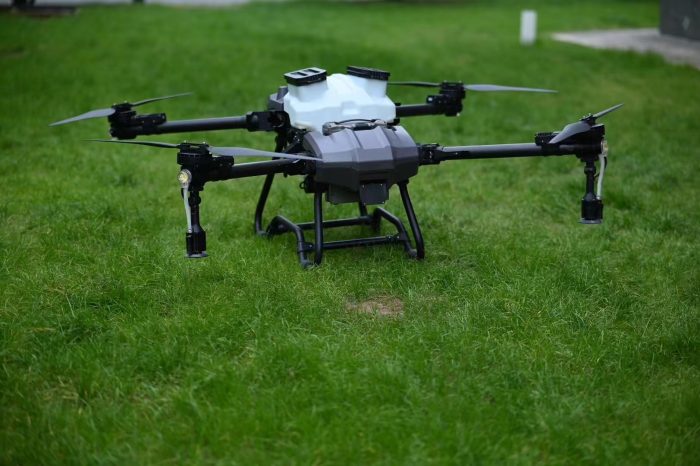
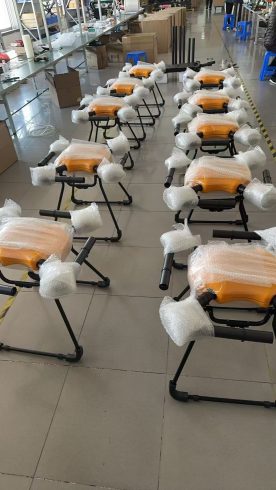
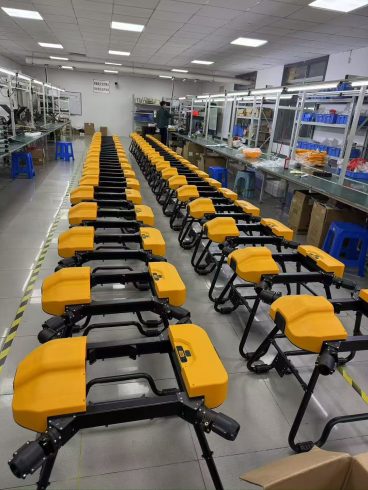


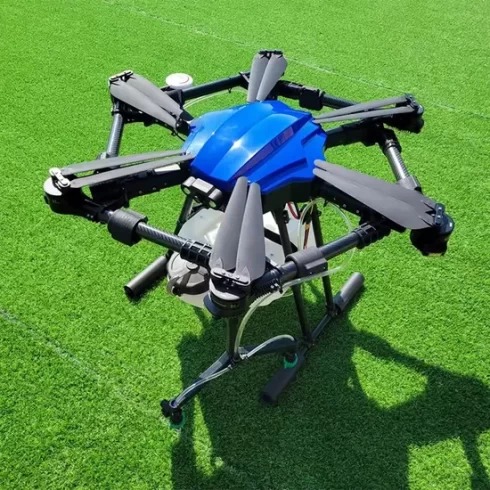

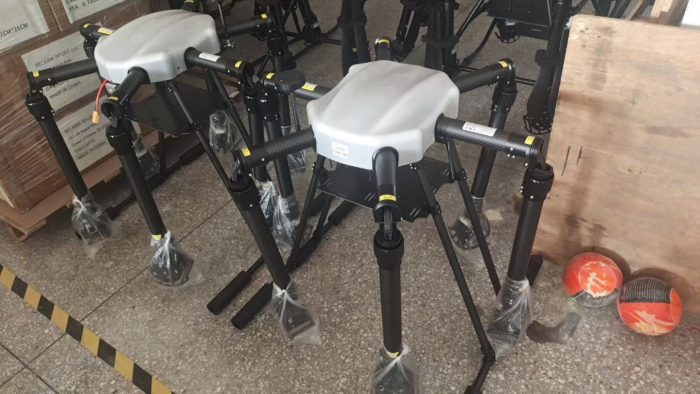

暂无评论内容